When done correctly, greenhouse farming is an environmentally-friendly way to grow crops. Canada is a top greenhouse farming country in the world. There are many advantages to greenhouse farming in Canada, including abundant sunshine, frost-free growing seasons, and a temperate climate.
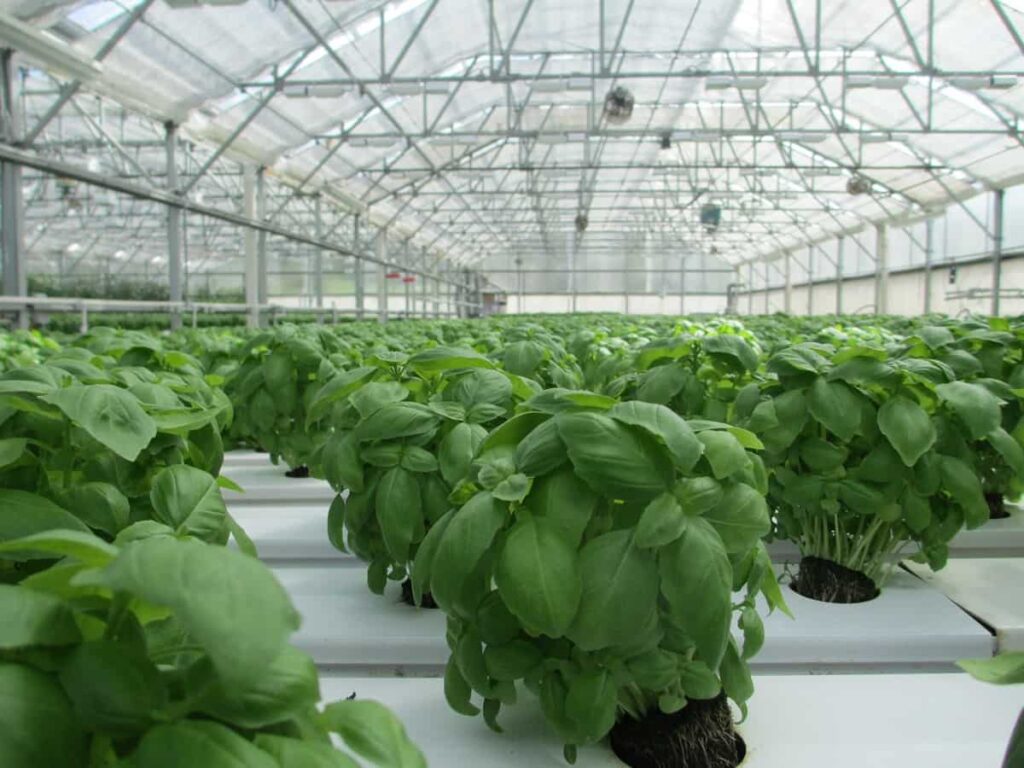
Greenhouse farming in Canada
What is greenhouse farming?
It is a type of agriculture that uses artificial structures to warm and humidify the air, making it easier for plants to grow. Greenhouse farming was first developed in the 1930s in Europe, but it has only recently become popular in Canada. Greenhouse farming is a relatively new method of agriculture that is still evolving.
As greenhouses become more sophisticated, they are more efficient at growing produce. In addition, Canadian greenhouse farmers are beginning to export their products to other parts of the world where the demand for organic produce is high. The benefits of greenhouse farming are numerous; from increased production to reduced environmental impact, it is an industry growing rapidly in Canada.
Are greenhouse farms profitable in Canada?
- Yes, greenhouse farms are profitable in Canada. It is a type of agriculture that uses artificial environmental conditions to produce plants. These environmental conditions include controlled temperatures, humidity levels, and light cycles.
- Greenhouse farming is an environmentally friendly method of production. It relies on renewable energy sources such as solar or wind power to operate the greenhouse, eliminating the need for pesticides or other chemical inputs.
- In Canada, the agricultural sector is one of the economy’s fastest-growing sectors. Greenhouse farms can help meet the growing demand for food products without contributing to pollution or climate change.
Factors to consider before starting a greenhouse farm in Canada
Greenhouse farming is a growing industry in Canada. Before starting a greenhouse farm, there are many factors to consider, but the operation’s profitability is often one of the biggest concerns. To start a greenhouse farm in Canada, you’ll first need to identify an area suitable for the type of agriculture you plan to pursue. You’ll also need to factor in your costs and decide whether you want to lease or purchase the land.
Once you have all this information, you can prepare your greenhouse for production. Equipment and materials are the main costs of starting a greenhouse farm in Canada. You’ll need to buy seeds, fertilizers, and other necessary supplies, and there are also construction costs associated with building a greenhouse. However, if you can attract private investors or government grants, your start-up costs can be reduced significantly.
In case you missed it: Greenhouse Farming in South Africa: How to Start, Crops, and Cultivation Practices
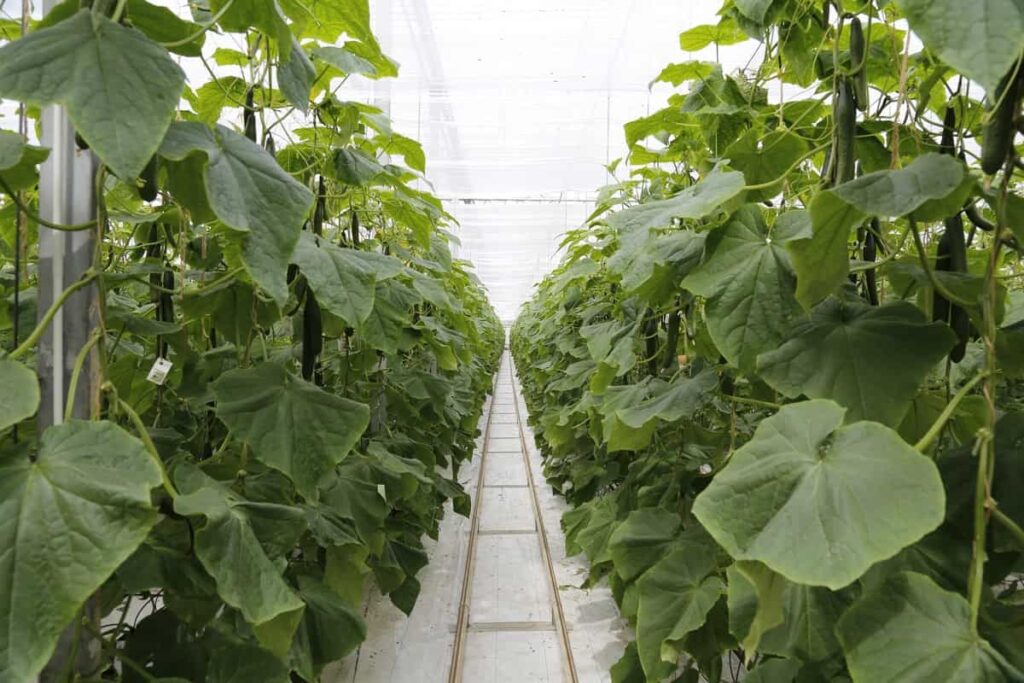
Once your greenhouse is operational, it’s important to monitor the crops closely so that they’re consistently producing high-quality produce. Sustainable farming requires regular expert input, and good equipment maintenance can be expensive. In addition, greenhouse farming is environmentally friendly but has some environmental drawbacks. For example, intensive crop production can increase pollution levels in local airwaves and water bodies.
Can you grow in a greenhouse year-round in Canada?
Yes, you can grow vegetables and flowers in a greenhouse year-round in Canada. The key is to start early and get the most out of your greenhouse season. Below are tips to help you succeed:
Plan your garden so you can get the most out of your greenhouse season
When planning your garden, consider what you want to grow and how much space you have available. In general, plants that do well in a greenhouse tend to be hardy and resistant to cold temperatures, so make sure to include these types of veggies in your garden plan. Also, consider planting flowers close to the window to benefit from the sun’s light while still being sheltered from the weather.
Use cool weather conditions as an opportunity
If it’s cooler outside than normal during your greenhouse growing season, don’t worry – this is an opportunity for growth! By starting plants earlier in the season and keeping them warm with supplemental heating, you can coax them to produce their best results. If it gets too hot inside your greenhouse, open some windows for fresh air or install fans to circulate the air.
Water wisely when it’s hot outside
During extreme heat or humidity periods, water your plants less often than usual to not over-water them and cause root rot or fungus growth.
Greenhouse vegetable production in Canada
Canada is a leader in greenhouse vegetable production, with over 2,000 hectares (5,000 acres) under cultivation. The main crops grown in greenhouses are bell peppers, broccoli, cauliflower, and cabbage. Greenhouse vegetable farming has many advantages over traditional farming. For example, it allows farmers to continuously produce plants year-round without the need for cold storage or shipping. Greenhouse farming also reduces soil degradation and supports biodiversity by using a variety of climates and light levels to grow different vegetables.
One of the biggest challenges greenhouse vegetable farmers face is finding affordable land suitable for growing vegetables. Canada’s climate is favorable for greenhouses, but the land cost makes it difficult for small farmers to invest in this type of agriculture. However, Canada’s government can help small farmers find land by providing subsidies and other assistance programs.
In case you missed it: 16 Key Rules for Effective Greenhouse Farm Management: From Planning to Reducing Production Cost
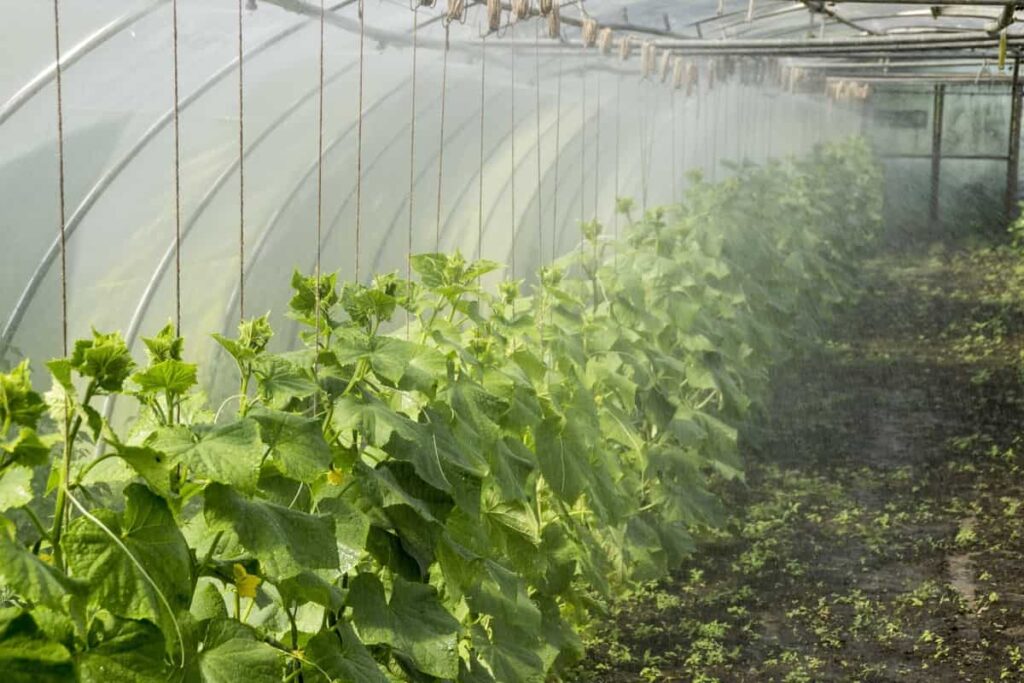
How does greenhouse farming work?
Greenhouse farming is a method of agriculture that uses artificial lighting to grow crops in an enclosed, warm environment. Greenhouse farming is popular in Canada because of the country’s cold winters and short growing seasons. To greenhouse farms, farmers first build an enclosed structure resembling a large, windowless room. They then set up rows of plastic or metal frames filled with soil and seedlings. The frames are kept at a relatively constant temperature by energy-efficient systems that use sunlight, water, and wind to produce warmth.
Crops are grown under greenhouses in Canada
In Canada, greenhouse farming is a popular method of growing crops. Greenhouses are often used to grow vegetables and fruits, allowing for consistent temperatures and humidity levels. This prevents the plants from experiencing seasonal changes, which can lead to better growth and production. Additionally, greenhouse farming allows farmers to take advantage of year-round weather patterns.
This means they can produce crops even when outdoor temperatures are below freezing, or the weather is too hot or humid for traditional agriculture. Greenhouse farming in Canada can be a great way to produce fresh vegetables and fruits without the need for cold weather. Many vegetables, like cucumbers, tomatoes, peas, and beans, can be grown year-round in greenhouses. Fruits like apples, pears, grapes, and strawberries can also be grown indoors in a greenhouse.
There are many types of greenhouses available to purchase or rent in Canada. You can choose from an open-air frame greenhouse or a glass curtain-walled greenhouse. Open-air greenhouses have large windows that allow you to see the plants inside the greenhouse. Glass curtain-walled greenhouses have panels of glass that divide the greenhouse into sections. This allows the plants to receive different amounts of sunlight and warmth.
The type of soil that is used in a greenhouse will also affect how well the plants grow. If you are growing vegetables, try using soil high in organic matter and has good drainage properties. If you are growing fruit trees or flowering plants, try using soil heavy in nutrients but light in clay.
Benefits of greenhouse farming in Canada
- There are many benefits to greenhouse farming in Canada. First and foremost, greenhouse farming is a very energy-efficient way to produce food. Greenhouse farming uses less energy than traditional farming methods, such as field cultivation or raising livestock, which can lead to significant environmental benefits.
- Greenhouse farming also creates jobs in the agricultural sector. This is because greenhouse farmers need only a small amount of land for their crops, and they can produce a large quantity of food using minimal inputs. As a result, greenhouse farming is particularly well-suited to small-scale operations, which can create jobs in rural areas.
- Greenhouse farming also has several health benefits. Finally, greenhouse farming is highly resilient to weather conditions. As long as the temperature remains above freezing and there is enough sunlight, plants will grow successfully in a greenhouse. This makes greenhouses ideal locations for producing food during times of drought or other weather disturbances.
Types of Canadian greenhouse farming
A variety of greenhouse systems in Canada can be used for growing produce. These systems range from traditional glass greenhouses to more innovative contraptions like hoop houses and tunnel greenhouses, which allow for greater flexibility in selecting crops and weather conditions.
Vertical greenhouses
These are the most common type of greenhouse and are built on a series of tiers that allow sunlight to penetrate deep into the plant’s roots. They’re good for growing high-value crops like tomatoes, cucumbers, and flowers.
In case you missed it: How to Water Your Garden with Solar Power: For Home Gardening, Greenhouse, Polyhouse, and Outdoor
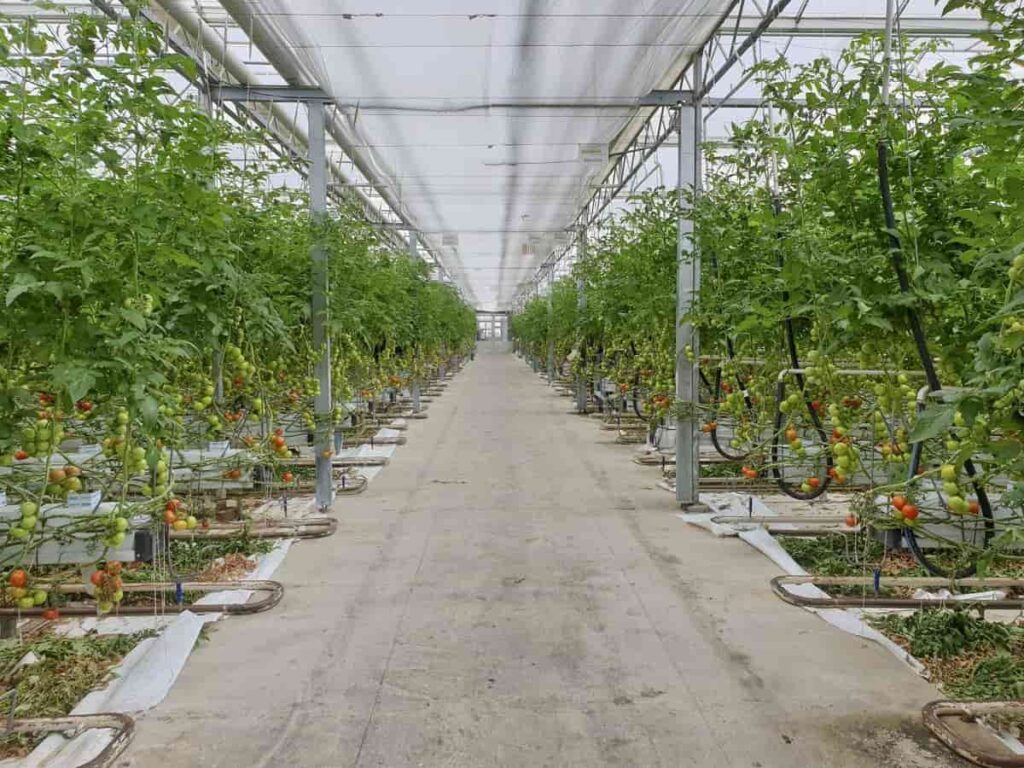
Hanging greenhouses
These tend to be more expensive than vertical greenhouses but can offer a wider range of crop options because they can be designed to grow various plants in multiple directions. They’re popular for growing vegetables like peppers, lettuce, and herbs.
Inverted-pyramid greenhouses
These are similar to hanging greenhouses but have a pyramid shape that allows more light to reach the plants at the top. They’re good for growing ornamental plants like roses or conifers.
Traditional glass greenhouses
These are the most common type in use in Canada. These greenhouses are shaped like a bell and can hold up to 1,000 plants. However, they need regular maintenance to keep the glass clean and free of pests, and they typically have a low yield compared to other types of greenhouse systems.
Hoop houses
These are a type of greenhouse system that is unique to Canada. Hoop houses are large hoops (typically 18 inches in diameter) covered in plastic or metal sheets. The hoops are filled with soil, and the plants grow around rather than inside them. This system allows for high yields (up to 400 pounds per square foot) because there is plenty of space for plants to grow.
Tunnel greenhouses
These are another type of greenhouse system popular in Canada. Tunnel greenhouses take advantage of natural sunlight by having long tunnels (up to 100 feet long) that run through them from top to bottom. The tunnels allow light to flood the entire greenhouse, resulting in higher yields and smaller sizes for the plants because they don’t need as much space.
Cost to start a greenhouse in Canada
The costs of constructing a greenhouse will vary depending on the size, location, and features desired. However, a basic greenhouse can typically be built for around $10,000-15,000 using materials readily available in most parts of Canada. There are many different types and sizes of greenhouses available, so it is important to select one appropriate for the size and number of plants being grown. Aside from the cost of materials and construction, there are also monthly costs associated with running a greenhouse.
These include electricity bills for heating and cooling systems and fertilizer and water bills. In addition, to maximize yields from crops grown in a greenhouse, it is often necessary to adjust to normal farming practices, such as seeding times and watering regimes. So whether you’re looking to grow vegetables or flowers in your backyard garden, a greenhouse is an affordable way to get started. To start a greenhouse farm in Canada, you must purchase or lease land, build your greenhouse, and purchase any necessary equipment.
Number of greenhouses in Canada
There are currently about 200 greenhouses across Canada, with a projected growth rate of about 30% per year. Most greenhouses are in southern Ontario and Quebec, but many are in British Columbia, Alberta, and Manitoba. The main reasons for this growth are the increasing demand for vegetables and flowers from Canadian consumers and the growing interest in sustainable agriculture. In addition, greenhouse farming is said to be more efficient than traditional farming methods because it uses less land and requires less water.
In case you missed it: Top 22 Succulents to Grow at Home: in Pots, Indoors, Greenhouse, Problems, and Care
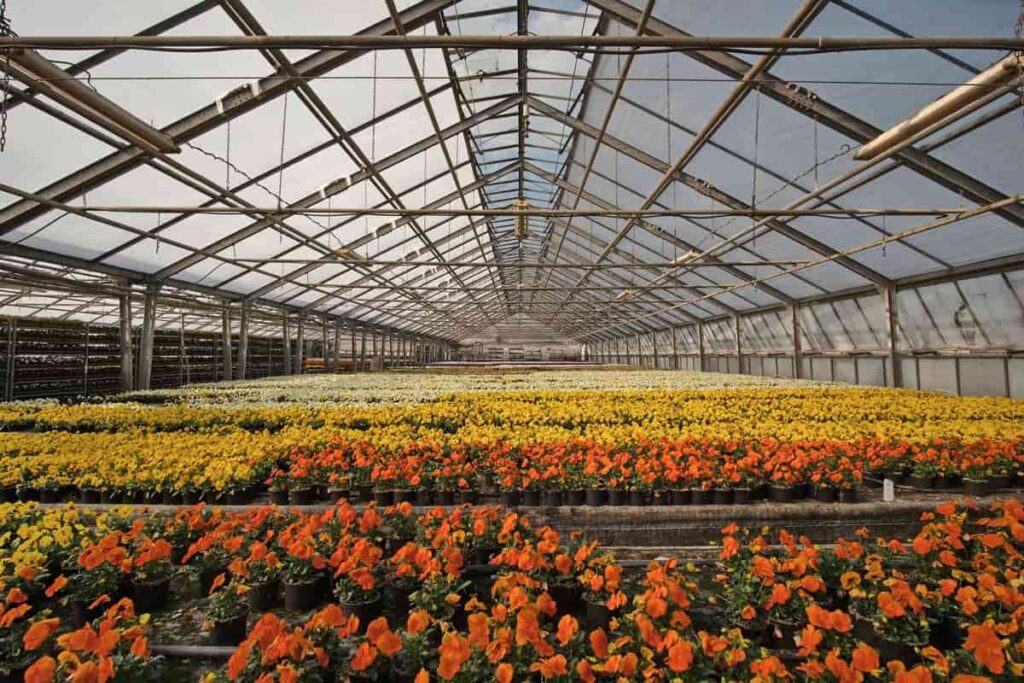
Commercial greenhouse farming in Canada
- There are many different types of greenhouses in Canada. Commercial greenhouses use electric lights and heating systems to create an environment that is warm and humidity-controlled. These greenhouses are used to grow flowers such as roses and lilies. The largest commercial greenhouse in Canada is located in Bowmanville, Ontario, and covers over 750,000 square feet.
- Greenspace Incorporated operates the largest greenhouse operation in Canada. It is located in Thunder Bay, Ontario, and covers an area of over one million square feet. This operation produces Canadian fruits such as apples, pears, strawberries, and grapes.
- Greenhouse farming provides Canadians with fresh produce they can not find at local markets or grocery stores. There are many factors to consider when starting a greenhouse business in Canada, including understanding the regulations that apply to your industry, selecting an appropriate location for your greenhouse, and securing the necessary permits and licenses. Additionally, it is essential to establish strong marketing plans and strategies to attract customers and keep them loyal.
- If you’ve decided greenhouse farming is the right business, plenty of resources are available to help, you get started. The Canadian Greenhouse Growers Association (CGGA) provides information on all aspects of greenhouse farming, from market analysis to business planning. The CGGA also offers membership benefits, such as access to industry resources and networking opportunities
Requirements to starting a greenhouse farming in Canada
To create a greenhouse farming operation in Canada, the following requirements must be met:
- Land: A dedicated greenhouse farm plot measuring at least 20,000 square feet is needed.
- Fertilizer and Water: Suitable fertilizers and water must be available for the crops.
- Climate Conditions: The greenhouse should be located in an area with a mild climate.
Challenges of greenhouse farming in Canada
- The expansion of greenhouse farming in Canada has raised several challenges for producers, regulators, and research institutions. In this article, we’ll look at some of the key issues that have come up as greenhouse farming has grown in popularity.
- Several factors have made greenhouse farming an attractive option for Canadian producers. First, the country has a temperate climate, which allows for the year-round production of crops. Second, ample land is available to grow crops in greenhouses, making the process more efficient than growing crops under glass in other countries.
- However, several challenges have come up with the expanding use of greenhouses. One issue is that the technology requires precise temperature control to ensure optimal growth rates for crops. This can be difficult to achieve in climates where temperatures vary significantly from day to night or season to season.
- Another challenge is ensuring water usage is optimized when growing plants inside a greenhouse. Unlike outdoor agriculture, where rainwater is collected and used to irrigate plants, hydroponic systems must carefully manage water usage within greenhouses so as not to damage plants or increase electricity bills.
- Finally, researchers are still trying to figure out best practices for using greenhouse gases in agriculture and how to mitigate their environmental impact. While greenhouse gas emissions from agriculture are low compared with other sources such as transportation or industrial production, they could still impact global climate change if not properly managed.
In case you missed it: Greenhouse Ginger Farming – A Full Planting Guide
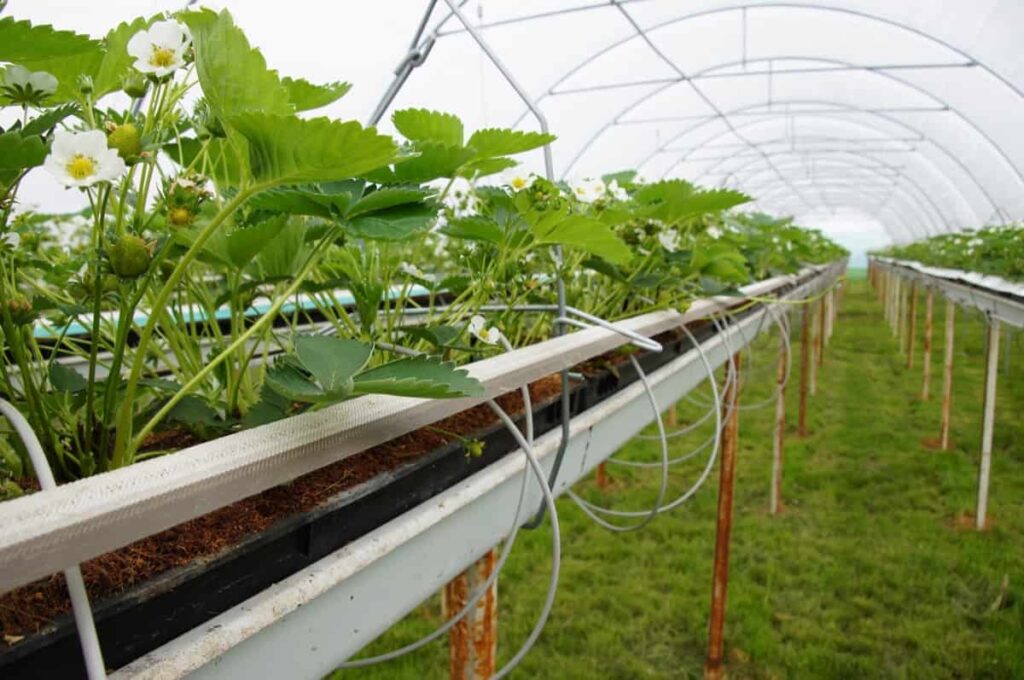
Greenhouse farming problems in Canada
Greenhouse farming in Canada has grown in popularity in recent years due to its many benefits. However, there are some problems that greenhouse farmers in Canada face. One of the biggest problems is the weather. Canada’s climate is not conducive to greenhouse farming, as it is too cold for most crops and too moist for most plants.
Another problem is pests. Most greenhouse crops are susceptible to pests; without good pest control systems, the crops can be ruined quickly. Finally, greenhouses also require a lot of maintenance, and if the conditions aren’t correct or the components aren’t up to par, the greenhouse will not function properly. All these factors challenge Canadian greenhouse farming, but it remains an important part of the country’s agricultural landscape.
Conclusion
It is a type of agriculture that uses glass or plastic structures to create warm, controlled environments for plants. This farming method is ideal for Canada because of its long, frost-free growing season and temperate climate. Greenhouse crop production is a cost-effective way to grow vegetables and flowers. In addition, greenhouse crops can be grown year-round, which means they can be harvested anytime during the year. This means greenhouse crops don’t need to be stored during winter, saving farmers time and money.
- Economical Aquaculture: A Guide to Low-Budget Fish Farming
- 15 Common Planting Errors That Can Doom Your Fruit Trees
- How to Make Houseplants Bushy: Effective Tips and Ideas
- Innovative Strategies for Boosting Coconut Pollination and Yield
- Pollination Strategies for Maximum Pumpkin Yield
- The Complete Guide to Chicken Fattening: Strategies for Maximum Growth
- Natural Solutions for Tulip Problems: 100% Effective Remedies for Leaf and Bulb-Related Issues
- Revolutionizing Citrus Preservation: Towards a Healthier, Greener Future
- Natural Solutions for Peony Leaf and Flower Problems: 100% Effective Remedies
- Maximizing Profits with Avocado Contract Farming in India: A Comprehensive Guide
- Natural Solutions for Hydrangea Problems: 100% Effective Remedies for Leaf and Flowers
- The Ultimate Guide to Choosing the Perfect Foliage Friend: Bringing Life Indoors
- From Sunlight to Sustainability: 15 Ways to Use Solar Technology in Agriculture
- The Ultimate Guide to Dong Tao Chicken: Exploring from History to Raising
- The Eco-Friendly Makeover: How to Convert Your Unused Swimming Pool into a Fish Pond
- Mastering the Art of Delaware Chicken Farming: Essentials for Healthy Backyard Flocks
- 20 Best Homemade Fertilizers for Money Plant: DIY Recipes and Application Methods
- How to Craft a Comprehensive Free-Range Chicken Farming Business Plan
- Brighten Your Flock: Raising Easter Egger Chickens for Beauty and Bounty
- How to Optimize Your Poultry Egg Farm Business Plan with These Strategies
- Subsidy for Spirulina Cultivation: How Indian Government Schemes Encouraging Spirulina Farmers
- Ultimate Guide to Raising Dominique Chickens: Breeding, Feeding, Egg-Production, and Care
- Mastering the Art of Raising Jersey Giant Chickens: Care, Feeding, and More
- Ultimate Guide to Raising Legbar Chickens: Breeding, Farming Practices, Diet, Egg-Production
- How to Raise Welsummer Chickens: A Comprehensive Guide for Beginners
- How to Protect Indoor Plants in Winter: A Comprehensive Guide
- Ultimate Guide to Grow Bag Gardening: Tips, Tricks, and Planting Ideas for Urban Gardeners
- Guide to Lotus Cultivation: How to Propagate, Plant, Grow, Care, Cost, and Profit
- Agriculture Drone Subsidy Scheme: Government Kisan Subsidy, License, and How to Apply Online
- Ultimate Guide to Raising Araucana Chickens: Breed Profile, Farming Economics, Diet, and Care
- Bringing Hydroponics to Classroom: Importance, Benefits of Learning for School Students
- Ultimate Guide to Raising Polish Chickens: Breed Profile, Farming Economics, Diet, and Care
- Ultimate Guide to Raising Australorp Chickens: Profile, Farming Economics, Egg Production, Diet, and Care
- Silkie Chicken Farming: Raising Practices, Varieties, Egg Production, Diet, and Care
- Sussex Chicken Farming: Raising Practices, Varieties, Egg Production, Diet and Care
- Homemade Feed Formulations for Livestock: Discover Cost-effective Starter to Finisher Feed Recipes
- 20 Best Pig Weight Gain Supplements: Top Swine Weight Gain Formulas
- Ultimate Guide to Elderberry Farming: Propagation, Planting, Yield, Cost, and Profit
- 100% Effective Strategies for Combating Pests and Diseases in Hibiscus: Prevent and Treat Successfully
- Management of Pests and Diseases in Mums: Ultimate Guide to Protecting Mums
- Management of Pests and Diseases in Home Garden: 100% Effective Control and Treatment Strategies
- Essential Guide to Disease Management for Backyard Poultry Owners
- How to Raise Wyandotte Chickens: A Profitable Wyandotte Farming for Beginners
- Ultimate Guide to Raising Brahma Chickens: Care, Feeding, Egg Production, and Breeding
- Ultimate Guide to Raising Leghorn Chickens: Feeding, Breeding, Egg Production, and Care
- Rabbit Disease Management: 100% Effective Control and Treatment Strategies
- Bolting Management in Plants: Prevention for Premature Flowers and Seeding in Crops and Vegetables
- How to Manage Pests and Diseases in Berry Orchards: A Comprehensive Guide
- Top 20 Goat and Sheep Weight Gain Supplements: Best Sheep and Goat Weight Gain Formulas
- Apple Scab Management: Disease Cycle, Spray Schedule, Fungicides, Control and Prevention Strategies
- Beetle Management in Plants: Control and Prevention Strategies
- Mini Highland Cattle Farming: Exploring Raising Miniature Cattles with Cost and Profit
- Problems of Indian Agriculture: Problems Faced by Indian Farmers
- How to Raise Buff Orpington Chickens: Guide for Egg Laying, Breeding, and Care
- How to Raise Dexter Cattle: Breeding for Beef and Milk, Pros and Cons, Weight Chart, and Cost
- Tomato Hornworm Management: Overview, Control, Prevent Five-spotted Hawk Moth
- Citrus Fertilizer Management: Nutrient Requirements and Application Schedule
- Kaffir lime Farming: Varieties, Planting, Growing, Cost and Profit
- Pest Control Cost Per Acre in India: Organic vs Chemical Cost Comparison
- How to Grow Pittosporum in Home Gardens: Guide to Planting to Care for Beginners
- Mulching Cost Per Acre: Exploring Cost-Effective Solutions for India
- 45 Days Chicken Business Plan: Revenue, Costs, and Profitability Analysis
- How to Grow a Finger Lime Tree: Planting, Propagation, Care for Citrus Australasica/Caviar Lime
- How to Increase the Sweetness of Fruits: Exploring Different Methods to Enhance Fruit Sugar Content
- Grape Farming in the Philippines: How to Plant and Grow Grapes in Filipino Soil, Cost, and Profit
- Livestock Vaccination Cost in India: Exploring Strategies to Reduce Animal Vaccination Costs
- Citrus Farming in Spain: Citrus Fruit Cultivation Cost, Profit, and Production by Area
- Citrus Cultivation in Africa: Citrus Fruit Farming Cost, Profit, and Production by Country
- Discover Top 20 Best Turkey Breeds to Raise for Meat and Eggs
- Citrus Farming in India: Citrus Fruit Cultivation Cost, Profit, and Production by State
- Cocoa Farming in West Africa: Exploring Cocoa Cultivation Industry from Cost to Profit
- Kinnow Farming: Kinnow Cultivation Cost, Profit, and Production by State in India
- Thailand All Time Mango Farming: How to Plant and Grow Katimon Mango
- Chinese Broccoli Farming: How to Plant and Grow Kailan/Gai Lan
- Pandal System of Training Cost Per Acre: A Comparative Analysis of Different Horticulture Crops
- Fertilizers Cost Per Acre: Analysis of Government Subsidies on Fertilizers in India
- Sugarcane Farming in Brazil: Exploring Varieties, Cultivation, Production Costs, and Profit
- 20 Best Fighting Roosters and Gamefowls: Fighting Style, Characteristics, Size, Origin, and History
- Land Cost Per Acre in India: Exploring Village Farm Land Cost and Agriculture Land Cost Per Acre
- Citrus Farming in the Philippines: Exploring Philipino Citrus Varieties to Growing Citrus Fruits
- How to Make Flowers Bloom Faster: Naturally, Overnight, at Home, and in Water with Fertilizers
- Pineapple Farming in the Philippines: Exploring Varieties to Cultivation Economics
- How to Increase Crop Yield: Production Boosting Methods and Ways of Improving Crop Yield
- How to Increase Flowering in Vegetables: Best Ways to Induce and Enhance Flower Set
- Summer Green Gram Cultivation: Varieties of Mung Beans and Irrigation Management
- How to Create a Farming Business Plan: Step-by-Step Guide for Agriculture Business Plan
- How to Increase Flowering in Fruit Trees: Step-by-Step Guide for Beginners
- Crop Yield Per Acre in India: Exploring State-wise Different Crop Yields
- Sustainable Living: The Growing Trend of Urban Apartment Gardening in India
- Everything You Need to Know about MSRI in Paddy for High Yields: Mechanized System of Rice Intensification
- Best Fertilizers to Increase Crop Yield: Boost the Yields of Vegetables, Fruits, Flowers, and Other Crops
- Pruning Schedule for Trees: Trimming Calnder for Different Plants and Trees
- Seed Rate Per Acre in India: Exploring Seeds Per Acre for Different Crops
- Fertilizer Application Rate Per Acre: Exploring Different Crop Fertilizer Application Rates
- Farm Income Per Acre in India: Exploring State-wise Farmer’s Income for 1-acre Cultivation
- Beekeeping in the Philippines: Exploring Apiculture Industry in the Philippines
- How to Grow Fairy Castle Cactus Plants: Exploring Propagation, Planting, and Care
- Pepino Melon Farming: Exploring Business Plan to Grow and Market
- Pest Management in Paddy at Panicle Initiation Stage: Best Pest Control Strategies
- 18 Ways to Build Your Own Trellis: Types of Plant Supports, Unique and Cheap Trellis Ideas